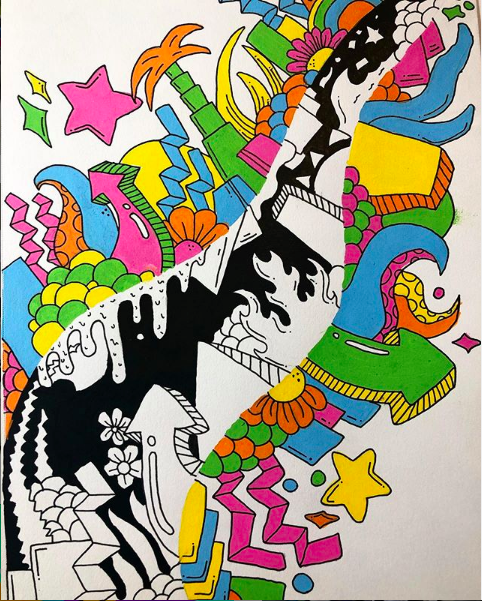One day during my junior year of high school, on our walk down to the soccer field, my best friend told me that a fellow teammate had just been diagnosed with a concussion. What was originally supposed to be a mild head injury, eventually turned into over nine months of recovery and the loss of her sports career. A girl who had grown up eating, sleeping, and breathing sports was suddenly stripped of one of the only things that made her happy. Progressively as the situation worsened, she was forced to find a new identity and to figure out how to live a life without sports.

As anyone can imagine, losing something that means so much to you is extremely difficult. On top of that, recovering from a traumatic brain injury (TBI) means that you can barely do anything beyond laying inside a silent, dark room for days and sometimes even weeks. Being so isolated and alone, especially as a teenager is mentally exhausting. You can’t help but to be jealous of your friends who get to go to school, attend dances, and participate in extracurricular activities. And to make everything worse, most teenagers take these things for granted.
According to the Mayo Clinic, people who have a TBI are two to five times more likely to develop depression than the rest of the population—and that’s just the average adult, I would guess that this rate is a lot higher for teenagers, due to the fact that social interaction and acceptance is more important at that age.
However, the way our teammate (Claire) handled the situation was incredibly inspiring. Forced to drop out of regular academic classes, Claire began to take on things she had never before attempted, like playing the guitar, drawing, and writing a graphic novel—all for school credit. She began creating murals around the school, in classrooms, and even in some offices. The art offered Claire a form of therapy to help prevent depression and anxiety around her current situation, and ultimately in the words of her mother, provided the means for her “to redefine her whole being at age 16.”

According to the American Art Therapy Association, “art therapy is an integrative mental health and human services profession that enriches the lives of individuals, families, and communities through active art-making, creative process, applied psychological theory, and human experience within a psychotherapeutic relationship.” Art therapy offers a means for people to express themselves or their feelings especially when words cannot. It has been used in a wide variety of patients including but not limited to kids experiencing trauma, those suffering from mental illness, and people fighting cancer.
The effect of art therapy on the reduction of depression has been studied in a wide population of individuals. The goal of one study, conducted by Eliana C. Ciasca, et al. was to determine the effects of art therapy as a adjunctive treatment for depression in elderly women. 66 women aged 60 and older who were stable on medication for depression were randomly assigned to either the control group (CG) or the experimental group (EG). Over the course of the study period, the EG group attended 20 art therapy sessions, while the CG did not receive any form of psychotherapy. The participants were evaluated before and after the study using the Geriatric Depression Scale (GDS), Beck Depression Inventory (BDI), Beck Anxiety Inventory (BAI), as well as cognitive measures. The study found that the patients in the EG had significant increases in their scores on the tests compared to the control group. It was thus concluded that art therapy can improve the symptoms of depression in elderly women.
As you can see, art therapy can be used as a beneficial release for people of all ages who are experiencing may different kinds of mental hardship. Today, as our society continues to face the overwhelming effects of COVID-19, I encourage people to take the time to sit down and try some art. Whether it is painting, coloring, or drawing, I guarantee even just 20 minutes will help take some away some of the stress.
Work Cited:
“About Art Therapy.” American Art Therapy Association, arttherapy.org/about-art-therapy/.
Ciasca, Eliana C, et al. “Art Therapy as an Adjuvant Treatment for Depression in Elderly Women: a Randomized Controlled Trial.” Revista Brasileira De Psiquiatria (Sao Paulo, Brazil : 1999), Associação Brasileira De Psiquiatria, 2018, www.ncbi.nlm.nih.gov/pmc/articles/PMC6899401/.
“Mayo Clinic Q and A: Risk for Depression After Traumatic Brain Injury.” Mayo Clinic, Mayo Foundation for Medical Education and Research, newsnetwork.mayoclinic.org/discussion/mayo-clinic-q-and-a-risk-for-depression-after-traumatic-brain-injury/.
Hi Aubrey! Hearing about your teammate was really inspiring! I’ve had minor injuries to my ankle and foot before, and even though it wasn’t nearly as extreme as a concussion, I know any injury that inhibits your normal/ social life in any way can be really frustrating and lonely. I think your teammate handled it extremely well, and I think we all could use this advice during these times! I know I will
This was a very inspiring and interesting blog post! I had a friend who tore her ACL senior year and had to stop playing soccer. She turned to choir as her own form of therapy. It’s also interesting to see now how many people are turning toward art while being stuck in quarantine. I wonder if art therapy will gain more credit once quarantine is over?
I have always been so interested in learning about how art therapy can help with mental illness, and I wish that I wasn’t so worried about the art turning out pretty so I could actually get some therapy time in. As for the TBI, I thought it was so strange how it increases your chances of having depression but something as simple as creating art for shorts amounts of time each week can actually improve your overall well being.